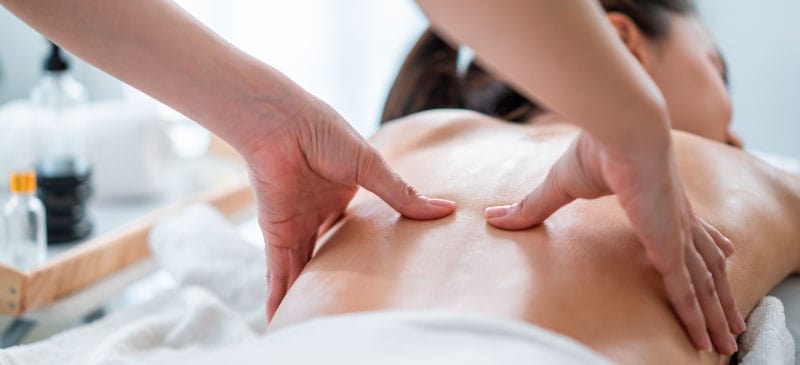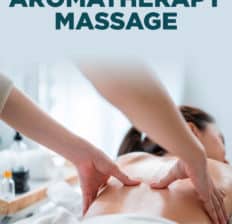This Dr. Axe content is medically reviewed or fact checked to ensure factually accurate information.
With strict editorial sourcing guidelines, we only link to academic research institutions, reputable media sites and, when research is available, medically peer-reviewed studies. Note that the numbers in parentheses (1, 2, etc.) are clickable links to these studies.
The information in our articles is NOT intended to replace a one-on-one relationship with a qualified health care professional and is not intended as medical advice.
This article is based on scientific evidence, written by experts and fact checked by our trained editorial staff. Note that the numbers in parentheses (1, 2, etc.) are clickable links to medically peer-reviewed studies.
Our team includes licensed nutritionists and dietitians, certified health education specialists, as well as certified strength and conditioning specialists, personal trainers and corrective exercise specialists. Our team aims to be not only thorough with its research, but also objective and unbiased.
The information in our articles is NOT intended to replace a one-on-one relationship with a qualified health care professional and is not intended as medical advice.
What Is an Aromatherapy Massage? Benefits + How to Do It Safely
October 8, 2022

In need of some relaxation and self-care? Consider getting an aromatherapy massage or even having someone you’re close to give you one at home.
What is an aromatherapy massage good for? Receiving one can help you better deal with stress — plus it’s useful for boosting blood flow and potentially reducing pain.
While massages and aromatherapy are both beneficial on their own, combining them makes them even more powerful, considering that together they tap in to multiple senses, including touch and smell.
What Is an Aromatherapy Massage?
What is massage therapy?
Massage therapy is a hands-on (manual) therapeutic approach that uses specific types of pressure and human touch. The main benefits associated with massages include:
- decreasing muscle tension and stiffness
- increasing blood flow
- reducing swelling and pain
- relieving stress
- potentially helping decrease the risk for future injuries
What is aromatherapy?
Aromatherapy is a type of alternative health practice that uses the power of scents for their beneficial physical and mental effects on the body.
Most often it’s done using essential oils, which are concentrated oils that have strong fragrances and other abilities, such as the power to help promote skin health and reduce inflammation. Essential oils are derived from roots, barks, stalks, leaves, flowers and fruit, each which has its own unique healing properties.
What happens in an aromatherapy session? It all depends on how you choose to practice aromatherapy, such as whether you’re visiting a specialist or doing it at home on your own.
- You might choose to breathe in essential oils directly from the bottle or a piece of cloth that has oil dabbed on it.
- You can massage oils into your skin after mixing them with a carrier oil, such as coconut or jojoba oil, to limit skin irritation.
- You can also diffuse oils in your home using steam or a vaporizer.
- Finally, you can spray oils and scents on your clothes, sheets, etc.
If you visit a therapist for an essential oil massage, you’re most likely to be treated with oils such as lavender, jasmine, ylang ylang and eucalyptus, all of which have positive effects, such as promoting relaxation and lifting your energy. A typical session can last about 60 minutes, during which you might be touched/massaged or listen to calming music.
What’s the difference between massage and aromatherapy?
While these two types of “therapies” are often combined, they have some key differences on their own.
Massage therapy is a physical practice that involves touch, while aromatherapy does not need to involve any direct contact at all. Instead, aromatherapy relies on your sense of smell, which as you’ll read more about below can have a direct impact on your mood.
That being said, the two approaches share many of the same benefits. Both can help:
- Decrease stress and anxiety.
- Lower muscle or joint pain and tension.
- Promote mindfulness, since they heighten sensations, including smell and touch.
- Improve your mood and focus by causing release of endorphins and other “feel good” chemicals.
- Help you to sleep more soundly.
Benefits/Uses
Considering that they can be pricey when you visit a trained massage therapist, are aromatherapy massages worth it?
While results depend on the individual — just like with any other therapeutic approach — utilizing calming scents and physical touch is typically an effective way to take care yourself both physically and mentally.
Below are some of the major benefits of receiving an aromatherapy massage:
1. Helps Reduce Effects of Stress
Aromatherapy massages often utilize smells and oils that have calming properties. When you smell a scent such as lavender or chamomile, it actually has a direct impact on certain emotional responses and brain functions.
Research has shown that lavender oil, for example, can naturally promote relaxation and decrease feelings of anxiety by impacting the release of cortisol and other “stress hormones.”
How is this possible? Scents are perceived thanks to olfactory nerves that lead right from your nose to your brain, which can then influence your mood. Some smells and oils can alter which types of neurotransmitters and even hormones you release, such as serotonin, which has relaxing effects.
Massages are also naturally stress-relieving for similar reasons: They can decrease your body’s “fight or flight” response and lower release of stress hormones.
2. Can Decrease Pain and Discomfort
Massage therapy has been shown in many studies to be helpful for fighting pain, stiffness, immobility and swelling, including among athletes and those with conditions such as arthritis. It does this by increasing circulation, along with breaking up muscle adhesions that can limit range of motion and flexibility.
Receiving a massage can also help stimulate the lymphatic system, which removes waste and excess fluids from connective tissues, helping decrease fluid retention and swelling.
Which type of massage is best for pain? A “Swedish massage” can help decrease soreness, and it also has benefits related to circulation and anxiety. This type involves long, fluid stroking of tissues.
A deep tissue massage may be beneficial for some types of pain inflammation, but it’s best to speak with your therapist or doctor first if you’re already injured. Another option is a Shiatsu massage, which is often done for back pain.
When it comes to aromatherapy’s effects on pain, as mentioned above, some scents have the power to help reduce feelings of stress that tend to worsen discomfort. Additionally, essential oils are absorbed into the bloodstream and metabolized in a way that promotes better health. Certain essential oils, such as peppermint and frankincense, can help fight free radical damage and inflammation, which contribute to many forms of pain.
If you deal with fatigue in addition to pain, certain oils and scents may be effective for lifting your energy, such as lemon, orange and peppermint, which all have uplifting qualities.
In fact, some people use aromatherapy with these oils to improve their focus, get rid of tension headaches and perk up their overall mindsets.
3. May Improve Sleep
Pain and stress are two big reasons why many people struggle to get good sleep. You can see then why a relaxing, soothing aromatherapy massage may make it easier for you to sleep well.
While it might not be practical to have a professional massage multiple times per week, you can still massage yourself before bed to help make yourself feel more comfortable. For example, try giving yourself a foot massage using lavender oil or a back and shoulder rub using peppermint oil.
Risks and Side Effects
If done by professional therapists, both massage therapy and aromatherapy are usually safe and well-tolerated. However, it’s important to use caution if you’re injured or sensitive to different scents, oils and fragrances.
Anyone who is recovering from an injury should always speak with a health care provider before receiving massages. This will limit the risk for aggravation and more pain. Tell your massage therapist if you have a history of pain, arthritis, or issues affecting particular muscles and joints.
If you have any allergies to specific plants or scents, such as those in the citrus, mint or lavender families, always let your massage therapist or aromatherapist know before a session. This is important to reduce the risk for negative reactions, such as a rash or trouble breathing.
How to Do It Safely
It’s a great idea to give yourself massages at home regularly to keep your mind, muscles and joints happy.
Here are some tips for safely practicing a self-massage using aromatherapy or giving one to someone else:
- Choose which part of the body you want to focus on most, such as your shoulders, back, feet, legs or neck. (If massaging the neck or spine be careful to use gentle touch if you’re not a professional.) You can even massage small amounts of some oils onto your face for anti-aging effects.
- It’s simplest and safest to use your hands to massage, but you can also try a massage gun, foam roller or even a tennis ball for extra pressure.
- Decide whether you want to diffuse scents in the room or apply them to your skin. If applying them, use a carrier oil or massage oil or lotion, and mix in one to three drops of your chosen essential oil. (See below for recommendations based on your goals.)
- Massage your body using your fingers and palms in firm, circular motions. Try going in one direction, then switching and moving in the other. For the best results, focus on one area at a time for about five to 10 minutes.
- A big aspect of aromatherapy massages is breathing. Remember to keep breathing steadily!
- After the massage is over, drink plenty of water. Some people also use a warm compress or an ice pack on tight areas to help promote healing.
Which oils should you use?
Each oil has its own unique benefits and qualities. You’ll experience the best results if you purchase high-quality oils, such as those that are organic and therapeutic-grade. Look for them online or in health food stores.
Here are suggestions for different scents/oils to use:
- To decrease discomfort, pain or inflammation: peppermint, frankincense, rosemary, geranium, cypress, helichrysum or cedarwood.
- For help decreasing swelling and increasing circulation: sandalwood, juniper berry, cypress, grapefruit and frankincense.
- To help you unwind and sleep: lavender, chamomile or ylang ylang.
- To improve focus and energy: grapefruit, peppermint, lemon, orange or spearmint.
Conclusion
- What is an aromatherapy massage good for? Considering this approach combines the powerful effects of scents with those of physical touch, it can be useful for decreasing stress, anxiety and pain.
- It’s a great way to look after yourself, sleep more easily, recover from workouts better, and lift your mood and focus.
- Essential oils to consider using during a massage (whether you receive a professional one or do it to yourself) include lavender, chamomile, peppermint, frankincense, ylang ylang, cypress and eucalyptus.




